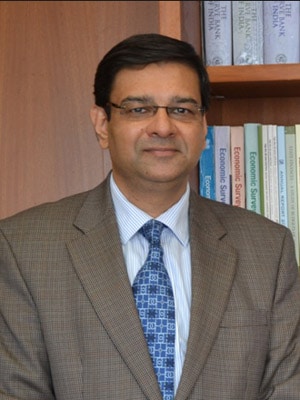
Guided by Urjit Patel panel, Rajan springs a 25 bps hike surprise
Signals significant change as it targets CPI inflation, makes price stability overriding policy objective
Reserve Bank of India governor Raghuram Rajan is fast turning out to be the master of surprise. Just when most economists and analysts had ruled out a rate hike in the third quarter review of the monetary policy, Rajan surprised the markets and the financial sector by hiking the benchmark repo rate – the rate at which RBI lends short-term funds to banks – by 25 basis points, taking it to 8 percent.
Clearly, the RBI move, which caught markets off-guard, has been aimed at managing inflation expectations and signals that price stability will be seen as the topmost priority for the central bank, a fact endorsed by C Rangarajan, the chairman of the Prime Minister’s Economic Advisory Council, in an interview to CNBC-TV18 following the policy announcement.
The Urjit Patel committee recommendations, which suggested keeping the consumer price inflation (CPI) figure as the nominal anchor, seems to be a key element in deciding the 28 January policy action. The policy statement has several references to the Patel committee and points to the ‘glide path’ for disinflation suggested by it, wherein the objective is to have an 8 percent CPI by January 2015 and below 6 percent CPI level by January 2016.
Retail inflation slowed in December, but still came in at 9.8 percent.
To be sure, Rajan has set out clear reasoning for raising rates at this stage. First, he points to the guidance in the mid-quarter policy review of 18 December, where the central bank had once again surprised markets by pressing the pause button when the markets had expected it to effect a rate hike. At the time RBI had said it was awaiting further data before taking a view on rates. RBI has interpreted the data which followed to be mixed, and indicative of the fact that inflationary risks remain in the system.
For instance, while headline inflation fell significantly with the subsequent fall in food and vegetable prices, CPI inflation, excluding food and fuel, has remained flat, and WPI inflation excluding food and fuel has, in fact, risen. This, RBI’s policy statement shows, was enough to warrant action this time.
In connection with the Patel committee’s 8 percent target, RBI goes on to say: “The Reserve Bank’s baseline projections set out in the accompanying Review of Macroeconomic and Monetary Developments for Q3 of 2013-14 indicate that over the ensuing 12-month horizon, and with the current policy stance, there are upside risks to the central forecast of 8 per cent.”
An increase in the policy rate, the central bank argues, will not only be consistent with the guidance given in the Mid-Quarter Review but also will “set the economy securely on the recommended disinflationary path.” Hence, while markets were expecting RBI to react to the WPI and CPI figures in general, the central bank has clearly put the CPI figure at the centre of its decision-making.
But despite the 25 bps surprise repo rate hike (and consequent increase in the Marginal Standing Facility rate to 9 percent), the policy does contain a dovish element for the near term. For instance, it says the extent and direction of further policy steps will be data dependent, “though if the disinflationary process evolves according to this baseline projection, further policy tightening in the near term is not anticipated at this juncture.” That that this could be the last of the rate hikes if data was favourable has also been suggested by Rangarajan.
In fact, RBI also says if the desired inflation outcome turns out as expected, real GDP growth could go from under 5 percent in 2013-14 to a range of 5 to 6 percent in 2014-15 “with risks balanced around the central estimate of 5.5 percent.” Ratings and analytics major Crisil, it may be recalled, has pegged the FY15 GDP growth at 6 percent, subject to conditions.
RBI has also stressed on the positives of late: the decline in the trade deficit and non-oil imports, the expectation that the current account deficit (CAD) will end up at below 2.5 percent of GDP from the much higher 4.8 percent in 2012-13. Besides, FDI is picking up and foreign portfolio inflows have resumed. But on the other hand, there are risks on the external front. “Notwithstanding the boost from stronger external demand, uncertainty continues to surround the prospects for some emerging economies, with domestic fragilities getting accentuated. Financial market contagion is a clear potential risk,” the central bank warns.
At a post-policy presser, however, Rajan said the Urjit Patel report was still being studied. However, RBI already appears to be veering to a change in its internal stance, with the CPI becoming the more important indicator. And, even as it does so, the policy reviews schedule is also being tweaked. From now on, such reviews will take place in a two-monthly cycle, consistent with the availability of macro and financial data, yet another recommendation of the Urjit Patel committee report.






